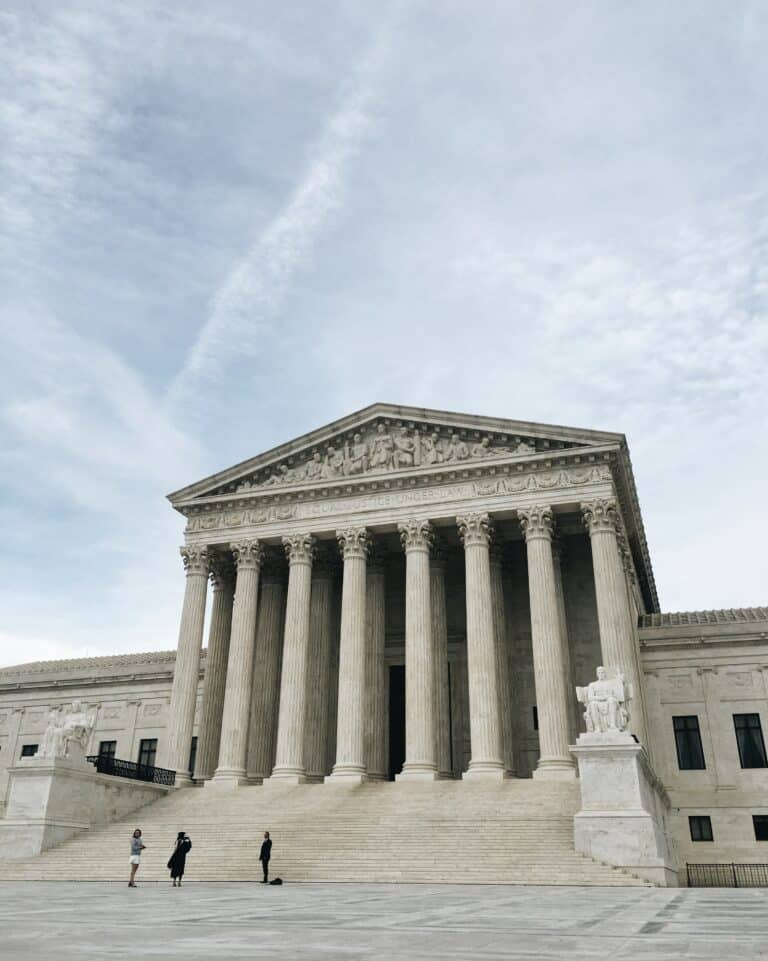Maxwell Ulin is a student at Harvard Law School.
Susan, age 49, has a problem at the restaurant where she works. After waiting tables for years, she now faces termination after her boss deemed her and other older women servers “too old” to continue working there. At the same time, management has made no moves to fire older men waiters and continues to hire them and younger women on staff. Under federal law, age and sex discrimination are each prohibited. Yet in cases like Susan’s, courts have generally been unwilling to accept claims where the two forms of discrimination intersect—at least until recently.
Courts have historically resisted recognizing “intersectional claims,” in which employees like Susan allege employer mistreatment based a combination of protected characteristics like race, age, or sex. Scholars such as Professor Kimberlé Crenshaw, for example, long criticized courts’ reluctance to embrace Black women’s mixed race-sex discrimination claims under Title VII. As an emerging body of literature notes, intersectional subgroups often experience unique forms of discrimination. Black women, for instance, face mistreatment not just as Black people and as women, but as Black women, who suffer from specific societal stereotypes regarding Black womanhood. Older women workers, as well, encounter similar intersectional challenges; since society tends to value women based on physical appearance more than it does men, the reduced attractiveness that our culture associates with aging causes employers to devalue older women in particular. Judicial hostility to intersectional claims thus leaves many discriminatory harms unaddressed.
But while courts in recent years have managed—albeit imperfectly—to accommodate claims for women workers of color, most have remained steadfast in opposing intersectional age claims of any kind. That all may have changed last summer, however, thanks to the Supreme Court’s landmark decision in Bostock v. Clayton Cnty., 140 S. Ct. 1731. By clarifying Title VII’s but-for cause standard, Justice Gorsuch’s majority opinion appears to pave the way for a range of intersectional claims, particularly in age discrimination cases.
Courts’ aversion to intersectional age claims has stemmed principally from disagreement over whether and to what extent discrimination law’s but-for-cause standard enables so-called “mixed-motive” claims, in which multiple considerations—both permissible and impermissible—lead an employer to discriminate. Under Title VII, the Supreme Court’s “sex-plus” doctrine states that employees can claim discrimination “because of” a protected characteristic even when multiple motives are at play, so long as the protected characteristic proved decisive to the employer’s decision. However, lower courts have read this doctrine narrowly, limiting it to cases where the additional factors either implicate fundamental rights—such as marriage or child-rearing—or other immutable characteristics protected by Title VII. Since age, unlike race, is protected not by Title VII but by the Age Discrimination in Employment Act (ADEA), some courts have reasoned that sex-plus doctrine cannot extend to so-called “sex-plus-age” claims, where both sex and age play into the employer’s decision.
Intersectional plaintiffs have fared even worse under the ADEA. In Gross v. FBL Fin. Servs., 557 U.S. 167 (2009), Justice Thomas made clear that Title VII’s “motivating factor” test, codified separately from the but-for cause standard, does not apply to ADEA cases. In doing so, Thomas stated that age must be “the ‘but-for’ cause” of an adverse employment action for a claim to stand. By requiring that age be the cause of discrimination, Justice Thomas’s article choice has led most lower courts to conclude that, in the absence of the motivating factor test, age must be the sole motive for employer action in ADEA cases. While it’s unclear that the Court in Gross actually meant this, the result has effectively been to eliminate so-called “age-plus” claims entirely.
Enter Bostock. By defining discrimination “because of” sex under Title VII, Justice Gorsuch clarifies that the Court’s sex-plus doctrine is broad-sweeping. According to Gorsuch, it does not matter what kinds of additional factors are at play in the employer’s decision; “[s]o long as the plaintiff ’s sex was one but-for cause of that decision, that is enough to trigger the law.” By dispelling any reservations courts may have read into the mixed-motive framework, Gorsuch asserts that all kinds of intersectional claims—including those incidentally involving age discrimination—are viable under the law.
Since Bostock, at least one circuit court has acknowledged these consequences of the decision. In Frappied v. Affinity Gaming Black Hawk, LLC, 966 F.3d 1038 (10th Cir. 2020), the Tenth Circuit reversed a district court’s dismissal of sex-plus-age claims brought by eight casino employees. Citing extensively to Bostock, the Frappied court reasoned that the but-for-cause standard set forth by the Supreme Court enabled sex-plus claims without regard to the nature of the additional factors. In so doing, the Tenth Circuit became the first appellate court to recognize sex-plus-age claims under Title VII and outlined a path for other circuits to follow.
But what if employees have more direct evidence of age discrimination than sex discrimination, making for a better claim under the ADEA? Thankfully, Bostock holds promise for intersectional ADEA claims, as well. Critically, Gorsuch gleans Bostock’s but-for-cause standard from language that appears identically in both Title VII and the ADEA. As the Supreme Court asserted in Trans World Airlines v. Thurston, 469 U.S. 111 (1985), interpretations of Title VII generally “appl[y] with equal force in the context of age discrimination” when, as here, the text of the two statutes is the same. In defining the causation standard, Gorsuch even cites to Gross, the controlling ADEA case, suggesting that Gross’s “but-for” standard is identical to Bostock’s. Moreover, Gorsuch goes out of his way to distinguish Bostock’s mixed-motive analysis from the motivating factor test rejected in Gross, writing that in those cases, “liability can sometimes follow even if sex wasn’t a but-for cause.” Taken together, Gorsuch’s opinion clearly suggests that Gross did not actually limit the ADEA to cases where age was the sole reason for an employment decision, but rather, like Bostock, allowed for cases where age was a decisive—but not necessarily exclusive—factor.
So far, however, intersectional ADEA claims have continued to face an uphill climb. Last month, in Pelcha v. MW Bancorp, Inc., 984 F.3d 1199, 1205 (6th Cir. 2021), the Sixth Circuit affirmed the dismissal of an “age-plus-sex” claim filed by a fired bank teller under the ADEA. Recognizing Bostock’s implications for Title VII, the court emphasized that the decision “does not stretch to the ADEA” and returned instead to the standard set in Gross, which it concluded required “that age [be] the reason why they were terminated, not…one of multiple reasons.” Still, the outcome of Pelcha remains far from settled; earlier this month, the Equal Employment Opportunity Commission (EEOC), AARP, and National Employment Lawyers Association (NELA) urged the circuit to grant plaintiff’s petition for en banc review, citing Bostock extensively in their amicus briefs.
As other circuits begin to weigh in on Bostock’s consequences for intersectional age claims, it may be that the high court will have to clarify any ongoing debate over the ruling’s application to the ADEA. Until then, however, the decision opens up new avenues for intersectional claims for older workers like Susan, particularly under Title VII. For a case heralded principally as a victory for LGBTQ rights, some of Bostock’s greatest beneficiaries may be far different from those first expected.









Daily News & Commentary
Start your day with our roundup of the latest labor developments. See all
July 9
In Today’s News and Commentary, the Supreme Court green-lights mass firings of federal workers, the Agricultural Secretary suggests Medicaid recipients can replace deported farm workers, and DHS ends Temporary Protected Status for Hondurans and Nicaraguans. In an 8-1 emergency docket decision released yesterday afternoon, the Supreme Court lifted an injunction by U.S. District Judge Susan […]
July 8
In today’s news and commentary, Apple wins at the Fifth Circuit against the NLRB, Florida enacts a noncompete-friendly law, and complications with the No Tax on Tips in the Big Beautiful Bill. Apple won an appeal overturning a National Labor Relations Board (NLRB) decision that the company violated labor law by coercively questioning an employee […]
July 7
LA economy deals with fallout from ICE raids; a new appeal challenges the NCAA antitrust settlement; and the EPA places dissenting employees on leave.
July 6
Municipal workers in Philadelphia continue to strike; Zohran Mamdani collects union endorsements; UFCW grocery workers in California and Colorado reach tentative agreements.
July 4
The DOL scraps a Biden-era proposed rule to end subminimum wages for disabled workers; millions will lose access to Medicaid and SNAP due to new proof of work requirements; and states step up in the noncompete policy space.
July 3
California compromises with unions on housing; 11th Circuit rules against transgender teacher; Harvard removes hundreds from grad student union.